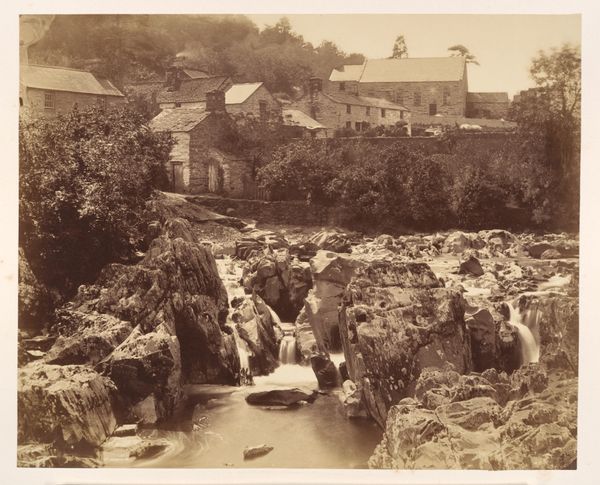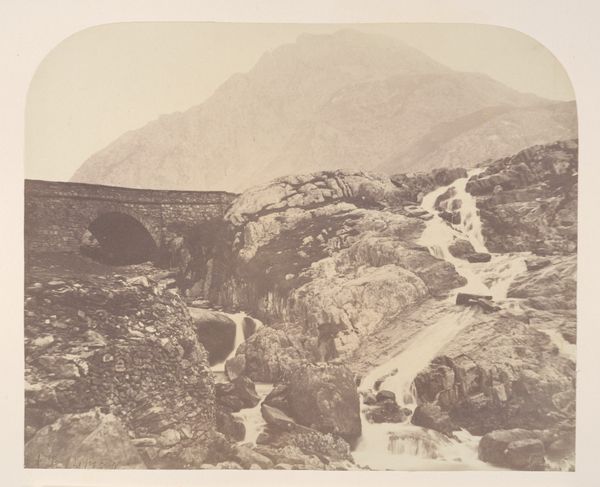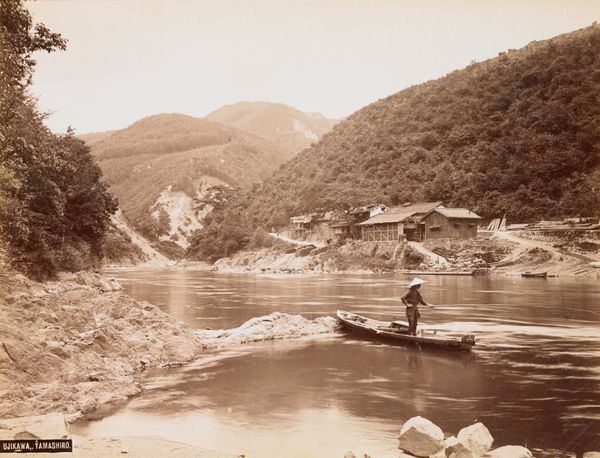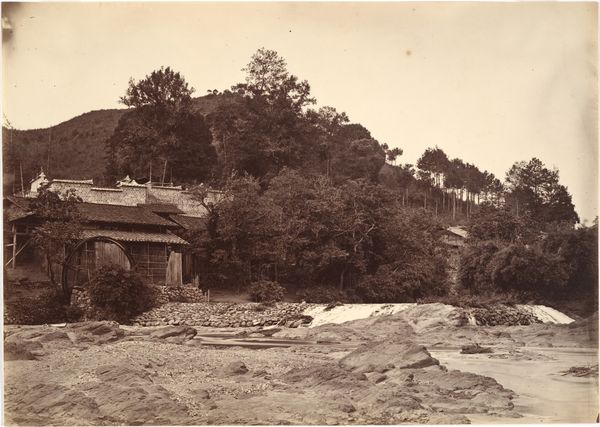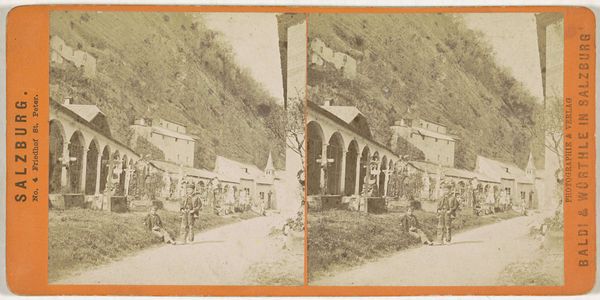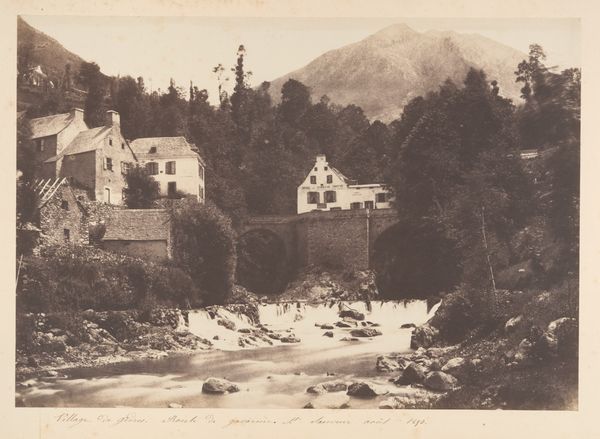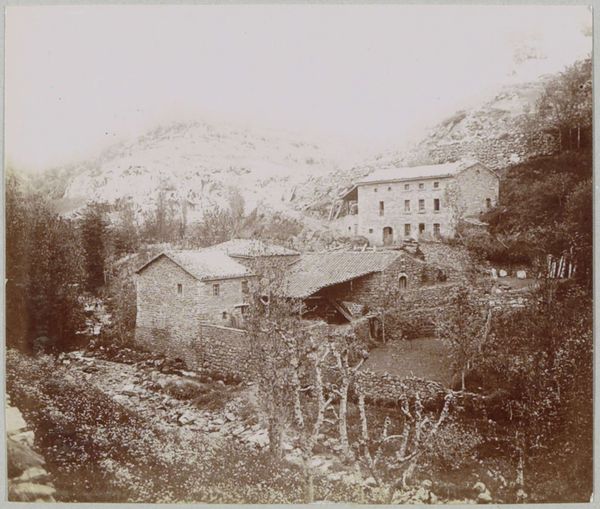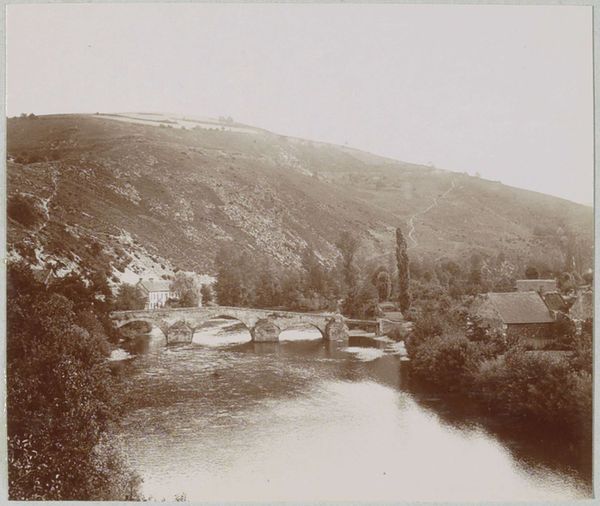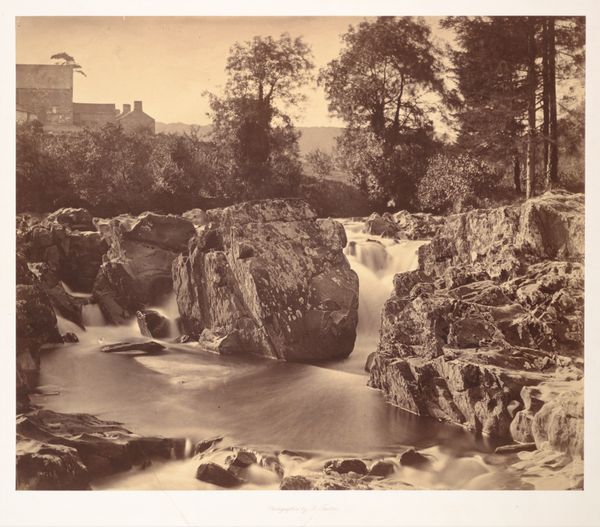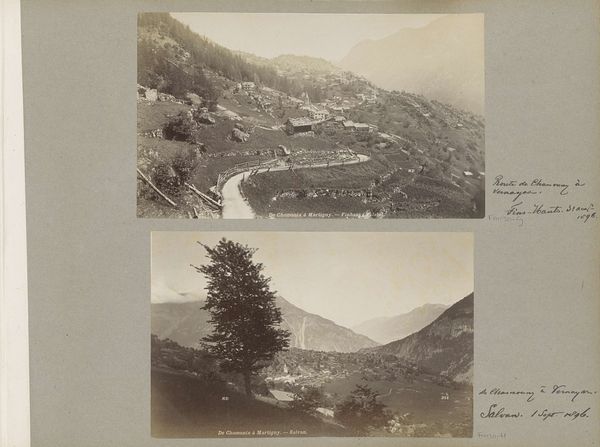
The Mouth of the East and West Lyn, Lynmouth, North Devon 1856
0:00
0:00
Copyright: Public Domain
Henry Pollock made this albumen silver print, showing the mouth of the East and West Lyn in North Devon sometime in the mid-19th century. The photograph itself, a relatively new medium at the time, involves a complex chemical process. Light-sensitive silver salts are deposited on paper, capturing a scene with remarkable detail. But it’s the subject that really speaks to processes of production. Look at the way the stone walls of the buildings seem to rise directly from the rocky riverbed. The village is literally built from the local geology. Water power was essential to pre-industrial economies. Mills would have been common in this area, and their construction and maintenance required skilled labor. We can imagine the stonemasons, quarrymen, and other tradespeople who shaped this landscape. Pollock’s photograph reminds us that even seemingly “natural” scenes are often the result of human labor, subtly embedding social and economic histories within the image.
Comments
No comments
Be the first to comment and join the conversation on the ultimate creative platform.
